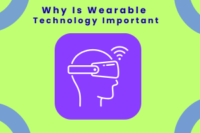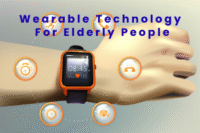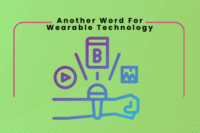The Fascinating History of Wearable Technology Explained
Published: 01 Jan 2025
Did you know that the history of wearable technology devices dates back more than a century? In 1924, Dr. Nathaniel Rochester developed an early version of a wearable computer to help automate tasks. While it looked nothing like today’s smartwatches, this invention marked the start of the history of wearable technology and laid the foundation for modern advancements.
Understanding how wearable technology started helps us appreciate the progress made in creating devices that have become essential to our daily lives—whether for health, fitness, or convenience.
The earliest wearable computer was developed in 1961 to predict roulette outcomes. This marked a turning point in the history of wearable technology, as noted by IEEE Spectrum.”
Timeline and Evolution of wearables
Let’s explore the evolution of wearables and how they have transformed over the years.
- 1961: Development of the first wearable computer by Edward O. Thorp and Claude Shannon.
- 1975: Pulsar released the first digital watch with a built-in calculator and memory.
- 1980s: Compact and efficient hearing aids became widely available.
- 1980s: Calculator watches gained popularity, especially from brands like Casio.
- 1994: Steve Mann developed the first wearable wireless webcam.
- 2000s: Introduction of fitness trackers like Fitbit for health monitoring.
- 2013: Launch of Google Glass, a pioneering augmented reality wearable.
- 2015: Apple Watch introduced, combining smartwatch and health-tracking features.
- 2020s: Advanced wearables integrated AI, AR, and health diagnostics.
The timeline of the history of wearable technology’s evolution is illustrated in the diagram below:
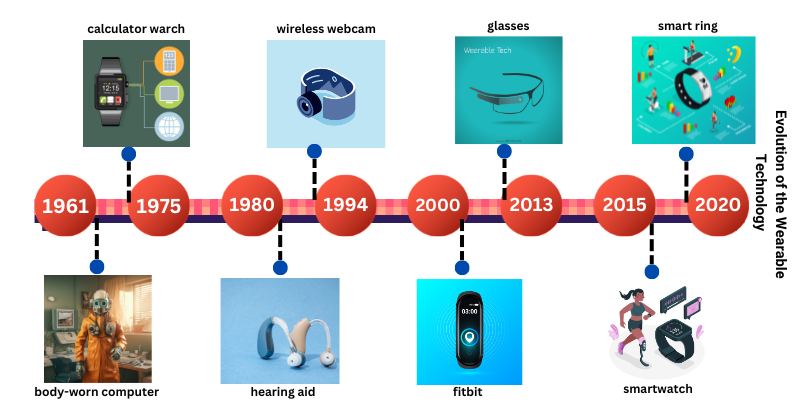
History of Wearable Technology
Here’s the detailed explanation for each event in the history of wearables:
1961: Development of the First Wearable Computer
- Date: 1961
- Location: United States
- Details: Edward O. Thorp and Claude Shannon created the first wearable computer designed to predict the outcomes of certain games. It was a small, analog device worn inside a shoe, operated via toe inputs.
- Outcome: This innovation demonstrated the potential for wearable technology in enhancing human capabilities and laid the groundwork for future developments.
1975: Pulsar’s Digital Watch with Calculator
- Date: 1975
- Location: United States
- Details: Pulsar introduced the first digital watch that included a built-in calculator. It featured buttons for numeric input and simple calculations.
- Outcome: The watch became a symbol of early multifunctional wearable devices, setting the stage for smartwatches.
1980s: Miniaturized Hearing Aids
- Date: 1980s
- Location: Worldwide
- Details: Hearing aids became more compact and efficient during this decade, making them more accessible and comfortable for users.
- Outcome: These advancements improved the quality of life for individuals with hearing impairments, showcasing wearable technology’s potential in healthcare.
1980s: Calculator Watches
- Date: 1980s
- Location: Japan and globally
- Details: Brands like Casio released watches with integrated calculators, combining practicality and portability.
- Outcome: These watches became popular for their utility, especially among students and professionals.
1994: First Wearable Webcam
- Date: 1994
- Location: Canada
- Details: Steve Mann, often referred to as the “father of wearable computing,” developed a wearable wireless webcam that allowed live video streaming.
- Outcome: This innovation was a precursor to modern wearable cameras and devices like action cams.
2000s: Rise of Fitness Trackers
- Date: Early 2000s
- Location: United States and globally
- Details: Fitbit introduced its first fitness tracker, designed to monitor physical activities like steps taken and calories burned.
- Outcome: Fitness trackers became widely adopted, promoting health awareness and personalized fitness goals.
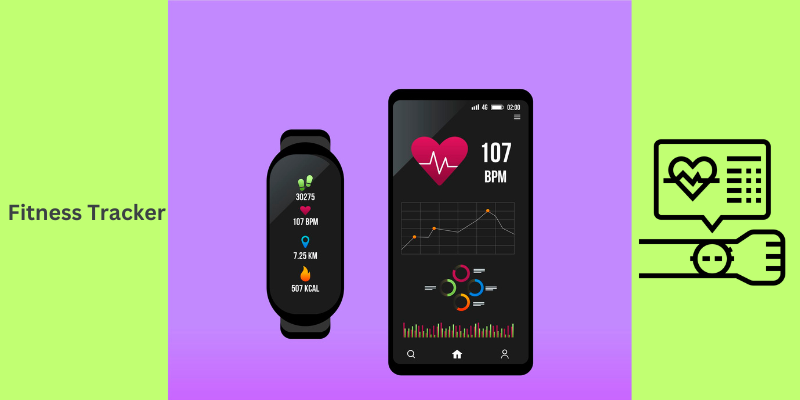
2013: Launch of Google Glass
- Date: 2013
- Location: United States
- Details: Google unveiled Google Glass, an augmented reality (AR) device worn like glasses. It allowed users to access the internet, take photos, and receive notifications.
- Outcome: While it received mixed reviews, it inspired further advancements in AR-based wearable technologies.
2015: Introduction of Apple Watch
- Date: 2015
- Location: United States
- Details: Apple launched its smartwatch, which combined health tracking, communication, and smartphone integration.
- Outcome: The Apple Watch quickly became a market leader, setting new standards for smartwatches.
2020s: AI and AR in Wearables
- Date: 2020s
- Location: Worldwide
- Details: Wearable technology evolved to incorporate artificial intelligence (AI) and augmented reality (AR), offering advanced features like health diagnostics, immersive experiences, and voice assistants.
- Outcome: These innovations solidified wearable devices as essential tools in healthcare, entertainment, and productivity.

The Impact of Wearable Technology on Society, Politics, and Culture
The history of wearable technology includes many great minds who shaped its growth. From Edward Thorp and Claude Shannon’s first wearable computer in 1961 to modern leaders at Apple and Google, each figure introduced innovations that led to today’s smart devices.
Short-term Effects
Wearable technology has quickly changed how people live, work, and connect.
- Health tracking: Devices like fitness bands and smartwatches help people monitor their health, reflecting the wearable technology growth rate.
- Convenience: Wearables provide easy access to notifications, simplifying daily tasks and showing how the history of wearable technology has influenced daily life.
- Style and identity: Wearables are now fashion accessories, blending tech with personal expression, as seen in the history of wearable devices.
Long-term Effects
Over time, wearable technology has shaped healthcare, privacy rules, and culture.
- Healthcare improvements: Continuous health monitoring with wearables supports early diagnosis and prevention, a concept rooted in what was the first wearable technology and the history of wearable tech.
- Privacy concerns: As wearables collect personal data, questions about safety have grown, a topic explored since how did wearable technology start.
- Cultural changes: Wearables have become symbols of a tech-focused lifestyle, showing their role in the evolution wearables and wearable technology growth statistics.
Key Figures in the History of Wearable Technology and Their Contributions
1. Steve Mann – The Father of Wearable Computing
- Invented the first wearable computer in the 1980s.
- Developed systems for augmented reality.
- Advocated for the cultural and societal impact of wearables.
2. Edward Thorp – Creator of the Wearable Computer
Edward Thorp used wearable tech for practical applications. His contributions demonstrated the early potential of these devices.
- Designed a wearable computer to predict roulette outcomes in the 1960s.
- Combined technology with real-world problem-solving.
- Inspired future advancements in computational wearables.
3. Fitbit Founders (James Park and Eric Friedman)
James Park and Eric Friedman revolutionized fitness tracking with wearable devices.
- Launched Fitbit in 2007 to promote personal health tracking.
- Popularized wearables for everyday users.
- Played a key role in shaping the modern fitness industry.
4. Jürgen Schmidhuber – AI in Wearable Devices
Jürgen Schmidhuber’s work in AI influences wearable tech advancements today.
- Developed AI algorithms powering wearable devices.
- Enabled real-time analysis in fitness and health monitoring.
- Brought wearable tech closer to artificial intelligence applications.
Different Perspectives on the History of Wearable Technology
1. Technological Perspective
Historians view wearable technology as a revolutionary step in integrating technology into daily life.
- Focus on making devices smaller and more advanced.
- Noticing important achievements like what was the first wearable technology, including the first wearable computer or fitness trackers.
- Highlighting how the history of wearable technology shows wearables improving health and communication over time.
2. Social Perspective
Societies see wearable technology as a tool for improving quality of life and personal efficiency.
- Promotes healthier lifestyles through fitness monitoring, a trend seen in the evolution wearables.
- Encourages constant connectivity and convenience.
3. Cultural Perspective
Cultural critics analyze wearable tech as a reflection of evolving human behavior.
- Represents the blending of fashion and function, aligning with the history of wearable devices.
- Highlights the desire for personalization and self-expression.
- Look at how wearable technology has influenced work-life balance and everyday habits.
4. Ethical Perspective
Some view wearable technology through an ethical lens, focusing on its potential risks.
- Fear of dependency on technology in daily life.
- Discussions about the fairness of health tracking and monitoring people, reflecting the ongoing debate about what is the earliest known wearable technology.
1. Myth: Wearables are only for fitness enthusiasts.
Fact: While many wearables track fitness, they also monitor health, improve communication, and even enhance productivity. For example, smartwatches help manage tasks and stay connected.
2. Myth: Wearables always provide 100% accurate data.
Fact: Wearable devices give close estimates, but they can have errors. Factors like movement or device placement can affect accuracy.
3. Myth: Wearables invade privacy.
Fact: While wearables collect data, most devices have strong security measures. Users can control what data is shared and with whom.
4. Myth: Wearables are too expensive for most people.
Fact: Some wearables are pricey, but affordable options exist. Basic fitness bands and smartwatches are available at lower costs.
5. Myth: People think wearables are just a short-term trend.
Fact: Wearable technology keeps evolving and becoming more useful, especially in health care and communication. It’s not just a trend—it’s a growing industry.
Common Questions
Here are some of the most frequently asked questions related to the history of wearable technology:
The development of wearable technology began with simple devices, like the first calculator watch in the 1980s, and evolved over time into more complex gadgets like smartwatches and fitness trackers.
Key figures include innovators like Steve Mann, often called the “father of wearable computing,” and companies like Fitbit and Apple, which have played major roles in advancing wearable devices.
The need for more convenient, efficient ways to track personal data, monitor health, and stay connected has driven the rise of wearable technology.
Wearables began with simple tools, like step counters, and gradually became smarter with features like heart rate monitoring, GPS, and syncing with smartphones.
Early examples include the pedometer in the 1960s and the calculator watch in the 1980s, which set the foundation for modern smartwatches and fitness trackers.
Future wearables may integrate advanced sensors, artificial intelligence, and improved connectivity to offer even more personalized experiences in health, fitness, and daily tasks.
Yes, wearable technology can improve health by helping users track their fitness, monitor vital signs, and set health goals. Devices like fitness trackers and smartwatches can track steps, heart rate, sleep, and even detect early signs of health issues, encouraging healthier habits.
The first wearable technology was the pedometer, invented in the 18th century, which counted steps to track physical activity. Later, in the 1980s, the calculator watch became one of the first modern wearable devices, combining a watch with a small calculator.
Wearable technology has had a big impact on health, fitness, and daily life. It allows people to track their physical activity, monitor vital signs, and stay connected, which helps improve personal health management. Additionally, it has influenced industries like healthcare and fitness, making it easier to live healthier lifestyles.
Wearable technology can affect your privacy by collecting personal data, such as health information, location, and activity levels. If this data is not properly secured, it could be at risk of being accessed by hackers or misused by companies. Users need to be mindful of privacy settings and data-sharing policies when using wearable devices.
| Conclusion |
|---|
|
Wearable technology has transformed how we live, work, and connect. It has improved health tracking, boosted convenience, and merged technology with personal style. However, it also brings challenges like privacy concerns and ethical debates. Over time, wearables have become more advanced and deeply integrated into our daily lives, as seen in the history of wearable technology. To fully understand the impact of wearable technology, explore the history of wearable devices and its evolution alongside future possibilities. Reading about its role in healthcare, communication, and society can provide deeper insights into this exciting field. |

- Be Respectful
- Stay Relevant
- Stay Positive
- True Feedback
- Encourage Discussion
- Avoid Spamming
- No Fake News
- Don't Copy-Paste
- No Personal Attacks

- Be Respectful
- Stay Relevant
- Stay Positive
- True Feedback
- Encourage Discussion
- Avoid Spamming
- No Fake News
- Don't Copy-Paste
- No Personal Attacks
